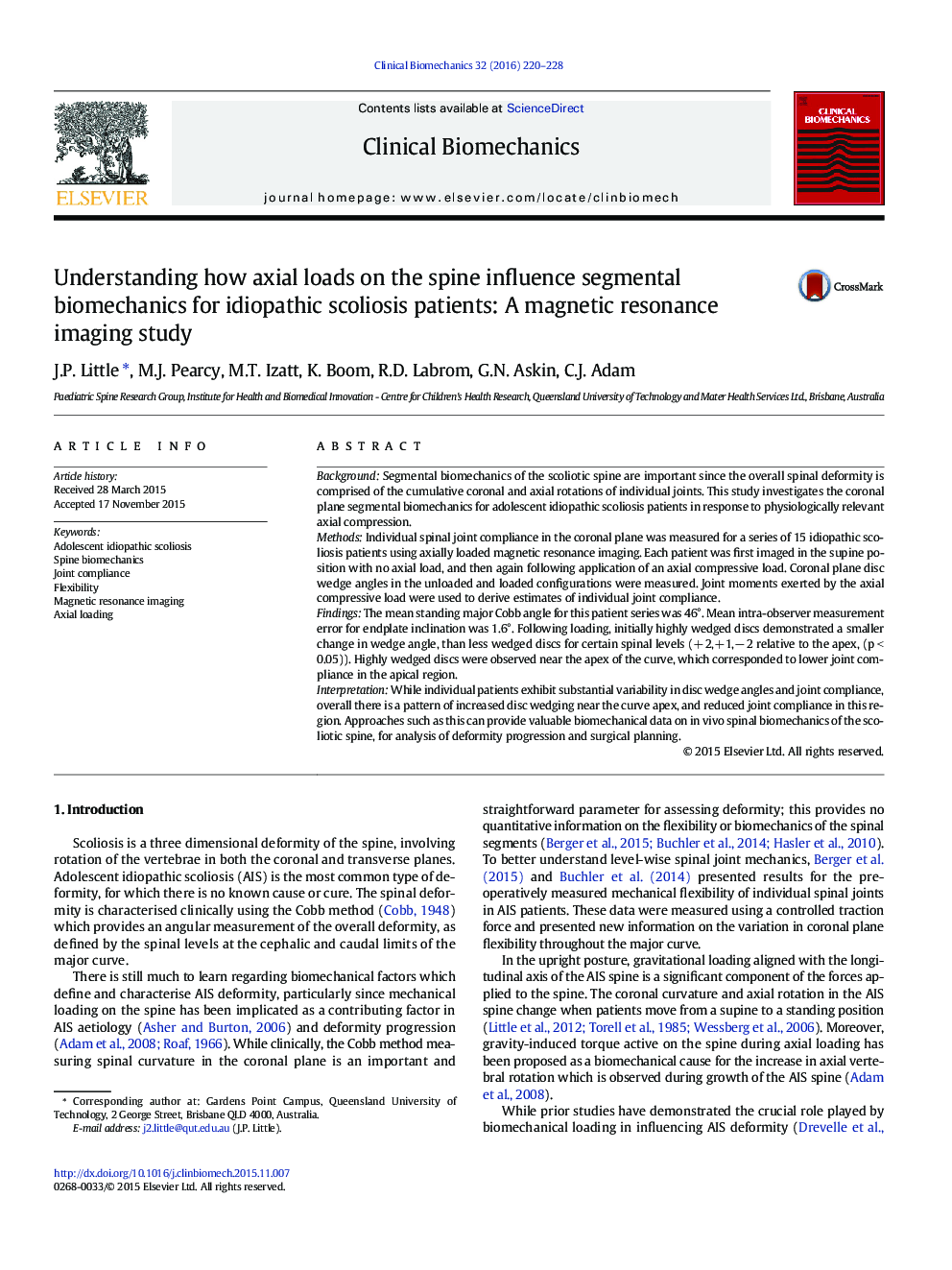| کد مقاله | کد نشریه | سال انتشار | مقاله انگلیسی | نسخه تمام متن |
|---|---|---|---|---|
| 6204651 | 1603746 | 2016 | 9 صفحه PDF | دانلود رایگان |
- Curve flexibility is important in assessing adolescent idiopathic scoliosis patients.
- Individual spinal joint flexibility was measured for scoliosis patients using axially loaded magnetic resonance imaging.
- Coronal plane disc wedge angles were measured in the unloaded and loaded conditions.
- Initially highly wedged discs showed a smaller change in angle than less wedged discs.
- There was increased disc wedging and reduced joint compliance near the curve apex.
BackgroundSegmental biomechanics of the scoliotic spine are important since the overall spinal deformity is comprised of the cumulative coronal and axial rotations of individual joints. This study investigates the coronal plane segmental biomechanics for adolescent idiopathic scoliosis patients in response to physiologically relevant axial compression.MethodsIndividual spinal joint compliance in the coronal plane was measured for a series of 15 idiopathic scoliosis patients using axially loaded magnetic resonance imaging. Each patient was first imaged in the supine position with no axial load, and then again following application of an axial compressive load. Coronal plane disc wedge angles in the unloaded and loaded configurations were measured. Joint moments exerted by the axial compressive load were used to derive estimates of individual joint compliance.FindingsThe mean standing major Cobb angle for this patient series was 46°. Mean intra-observer measurement error for endplate inclination was 1.6°. Following loading, initially highly wedged discs demonstrated a smaller change in wedge angle, than less wedged discs for certain spinal levels (+ 2,+1,â 2 relative to the apex, (p < 0.05)). Highly wedged discs were observed near the apex of the curve, which corresponded to lower joint compliance in the apical region.InterpretationWhile individual patients exhibit substantial variability in disc wedge angles and joint compliance, overall there is a pattern of increased disc wedging near the curve apex, and reduced joint compliance in this region. Approaches such as this can provide valuable biomechanical data on in vivo spinal biomechanics of the scoliotic spine, for analysis of deformity progression and surgical planning.
Journal: Clinical Biomechanics - Volume 32, February 2016, Pages 220-228
